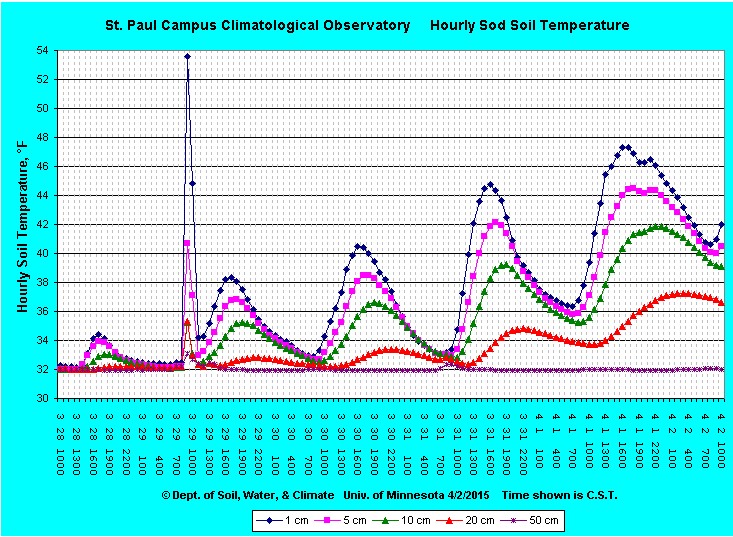By Sam Bauer
Every year around this time I start receiving questions regarding when to apply preemergent herbicides for preventing crabgrass establishment in lawns. Crabgrass germination is driven by soil temperatures and because of this we cannot rely on a calendar date to tell us when to apply our preemergent products. The reality is, if we wait too long and miss the window of opportunity to apply crabgrass preventers, these products will not do much for control of crabgrass. For this reason I like to rely on a couple of website resources that help to determine when to make these applications. The first website that I like to use can be found here: http://www.gddtracker.net/ This is a site operated by Michigan State University and the model uses air temperature predictors to determine when to apply crabgrass preventers. Simply select the tab “Crabgrass PRE”, enter your zip code, and the map will be created. Below is the current map for Minnesota. As you can see, we are just getting into the time for optimum prevention of crabgrass with preemergent herbicides. Based on the extended forecast calling for sub-50 degree air temperatures, we still have plenty of time to get these products down. For a more detailed explanation of how to utilize this website for crabgrass prevention, see this great post from Dr. Aaron Patton at Purdue University: http://purdueturftips.blogspot.com/2013/04/when-should-i-apply-my-preemergence.html
The other website that I like to use is the University of Minnesota’s Climatology Working Group Site: http://climate.umn.edu/ On this site you can look up weather information including soil temperatures for your specific location in the state. For example, below is the current map for soil temperatures under sod in St. Paul at depths of 1, 5, 10, 20, and 50 cm. Preemergent herbicides for crabgrass should be applied before soil temperatures are 55 degrees in the upper 1-2 inches for several days.
Now here’s something else to think about. Crabgrass preventers that include fertilizer, like Scott’s Turf Builder with Halt’s Crabgrass Preventer, can be convenient for both professional turfgrass managers and homeowners. However, when using products that offer the convenience of a 2 in 1 (fertilizer with herbicide), it may be more difficult to identify an ideal timing for application. By this I mean that the appropriate time for applying a crabgrass preventer may not coincide with the time to fertilize. Typically we suggest to apply fertilizer to your lawn when it is actively growing in the spring from mid-May to early-June. If the lawn isn’t actively growing and quick release sources of fertilizer are used, there is a potential for these nutrients to be lost through leaching or runoff. Crabgrass preventers should go down from mid-April to mid-May, which is often too early for fertilizing. For these reasons, I suggest to use caution with these products and carefully consider when would be the appropriate time to make applications depending on where you are in the state. Products containing slow release sources of nitrogen can be put down earlier than products with quick release sources.
For more information on preventing crabgrass, including identifying crabgrass and choosing herbicides, visit these great resources from Purdue University and Dr. Aaron Patton’s Program: http://purdueturftips.blogspot.com/2015/03/common-questions-about-crabgrass.html

